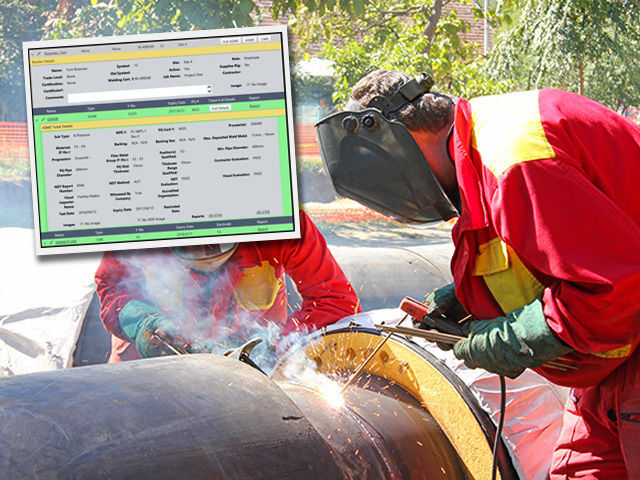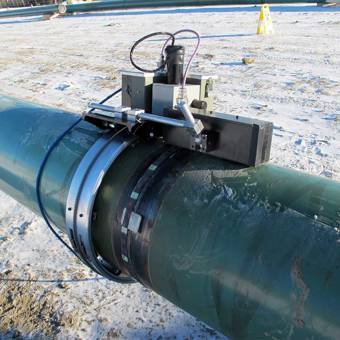Essential Pipe Welding Assessment Tips for Top Quality Guarantee
In the realm of pipeline building and construction, the stability of welds holds extremely important significance to ensure the safety and security and effectiveness of the whole system. From gas to improved petroleum items, pipelines develop the lifeline of numerous sectors. Just how can one assure the quality of these welds that connect the pipeline areas? The response hinges on thorough assessment methods and adherence to rigorous quality control requirements. By comprehending the vital pipe welding evaluation tips, experts can prevent possible risks, reduce expensive fixings, and maintain the integrity of these important frameworks.

Importance of Welding Evaluation
Welding examination plays an essential function in guaranteeing the architectural honesty and security of pipeline systems. By diligently analyzing welds, examiners can recognize any type of flaws or flaws that can compromise the honesty of the pipe. These examinations are essential for avoiding leakages, tears, and other potentially catastrophic failings that might lead to ecological damage, economic losses, and even loss of life.
The significance of welding examination can not be overstated, as the high quality of welds straight affects the general performance and long life of the pipe. With non-destructive testing techniques such as visual assessment, ultrasonic screening, radiography, and magnetic particle screening, assessors can detect problems that may not be visible to the naked eye. By identifying and addressing these issues early on, welding evaluation assists to make certain that pipes fulfill sector standards and regulative needs.
Inevitably, welding assessment is a crucial element of high quality assurance in pipe upkeep, repair work, and construction (Pipeline Welding Inspection). By upholding strenuous examination standards, industry experts can alleviate risks and promote the security and reliability of pipeline systems
Usual Welding Defects
Among the challenges encountered in pipeline welding, common issues can substantially impact the architectural honesty and efficiency of the welded joints. A few of the most common welding defects include absence of combination, porosity, cracks, insufficient infiltration, and imbalance. Lack of fusion takes place when there is insufficient bonding in between the weld steel and the base metal, bring about a damaged joint. Porosity, characterized by gas pockets within the weld, can lower the stamina and make the weld at risk to corrosion. Fractures in the weld can circulate over time, compromising the structural integrity of the pipe. Insufficient penetration takes place when the weld metal does not fully pass through the joint, leading to a weak bond. Imbalance, where the weld grain is not appropriately centered, can bring about tension concentration factors and possible failing. Detecting and dealing with these common issues via complete evaluation and high quality control processes are necessary for ensuring the dependability and security of pipe welds.
Examination Strategies for Pipes


In guaranteeing the structural integrity and integrity of pipeline welds, the application of strenuous inspection techniques is paramount. Numerous assessment techniques are employed to detect prospective flaws and make certain the general high quality of the welds. Non-destructive testing (NDT) methods such as radiographic screening, ultrasonic screening, magnetic particle screening, and fluid penetrant screening are commonly utilized in pipe welding examination. Radiographic testing entails making use of X-rays or gamma rays to find interior problems, while ultrasonic testing utilizes high-frequency sound waves to recognize blemishes. Magnetic particle screening works for discovering surface-breaking defects, and fluid penetrant screening is made use of to detect surface area cracks. Aesthetic examination is also necessary in pipe welding to recognize any kind of noticeable issues or stoppages. In addition, automated examination click to read methods making use of innovative modern technologies like robotics and drones are significantly being utilized to improve the performance and precision of pipeline inspections. By utilizing a combination of these examination techniques, pipeline weld high quality can be guaranteed, and prospective problems can be minimized before they rise right into bigger problems.
Making Sure Quality Control Standards
To support rigorous top quality assurance requirements in pipe building, meticulous adherence to developed market methods and standards is vital. Quality guarantee in welding procedures requires a detailed technique including various stages of pipeline building and construction. Carrying out a robust top quality management system that consists of regular audits and evaluations can even more enhance the total top quality guarantee standards in pipe welding.
Protecting Against Costly Repair Work
Provided the vital significance of maintaining rigorous quality guarantee criteria in pipe construction, a positive method to avoid expensive repairs is important. By implementing extensive assessment methods throughout the welding procedure, potential concerns can be determined and fixed early on, inevitably conserving both money and time. One essential aspect of avoiding costly repair work is guaranteeing that welders are appropriately educated and licensed, as this substantially reduces the probability of malfunctioning welds that might bring about future failures. Furthermore, using advanced evaluation methods such as non-destructive testing can aid spot any type of issues or disparities in the welds before they intensify into significant troubles. Normal upkeep checks and tracking of environmental elements that might impact the honesty of the pipe are likewise important in stopping expensive repair work. By buying preventative procedures and prioritizing quality control at every phase of the pipe welding process, companies can lessen the risk of pricey repairs and make certain the long-lasting reliability of their facilities.
Verdict
In verdict, adherence to proper welding examination methods is crucial for guaranteeing the quality and stability of pipes. By determining usual welding problems and implementing detailed his explanation evaluation processes, costly repair work can be avoided, and quality guarantee standards can be met - Pipeline visit this site Welding Inspection. It is crucial for pipeline welders to prioritize assessment procedures to keep the safety and reliability of the infrastructure they are dealing with
The importance of welding inspection can not be overemphasized, as the top quality of welds straight influences the total efficiency and long life of the pipe. Non-destructive screening (NDT) strategies such as radiographic screening, ultrasonic screening, magnetic bit screening, and fluid penetrant screening are frequently utilized in pipeline welding examination. Aesthetic examination is likewise vital in pipe welding to identify any type of visible issues or suspensions. Furthermore, automated inspection strategies making use of innovative technologies like robotics and drones are significantly being used to improve the performance and accuracy of pipe examinations.In conclusion, adherence to appropriate welding examination techniques is vital for making certain the top quality and integrity of pipelines.